Ideally, a new pair of shoes should be comfortable and fashionable. However, you may find a lot of options in footwear shops that meet these 2 criteria, but at the same time their quality is so bad that they won’t last long. We decided to find out what things you should pay attention to in order to choose a really high-quality pair.
Check the shoes for smudges and glue marks.
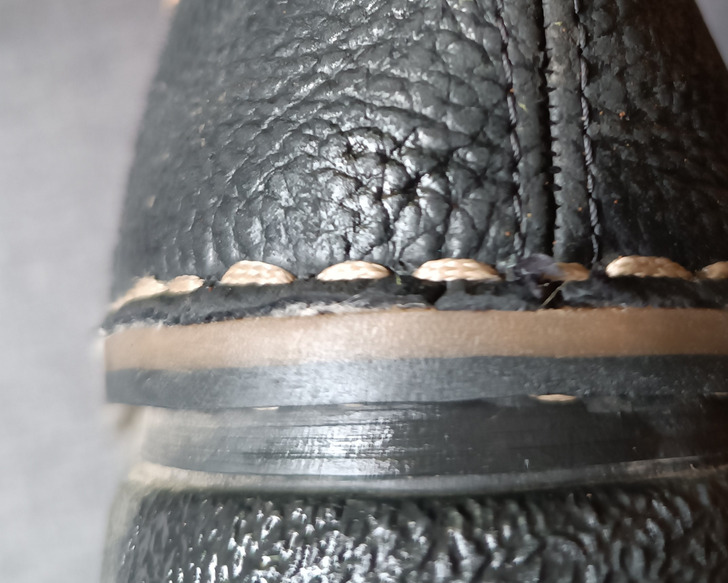
Manufacturers often use glue to stick together different parts of the shoe. If the glue is of high quality and the work is done properly, the pair will last a long time. However, small glue drips in the spots where parts meet or traces of glue on the surface indicate that you are looking at low-quality shoes and that there were issues during production.
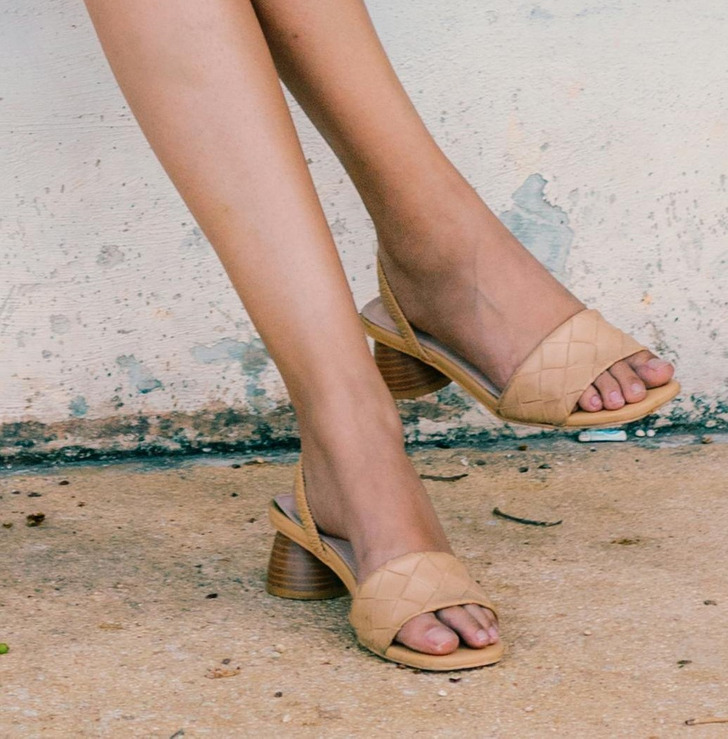
When a part of the shoe, its sole or insole, comes off a bit, it means the shoemaker probably used bad or expired glue, and this pair will fall apart quickly.
Examine whether the pair is symmetrical.
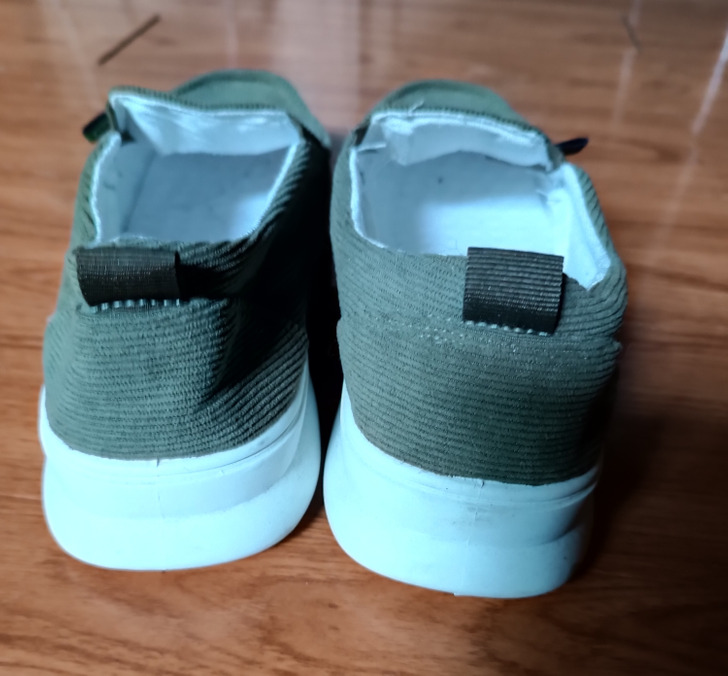
Quality shoes in a pair should be symmetrical, and any differences between the right and left shoes most likely indicate a defect. To check this, you need to put the soles of both shoes together and see if they match in length and width.
It’s also worth putting the pair on the floor to understand whether the height and outline of the upper edge of the heel are symmetrical. If the soles are painted in different colors, check whether the paint is within the borders of the sole and whether the pattern matches. Gross irregularities in symmetry indicate that the manufacturer didn’t pay much attention to quality.
Check the seams carefully.
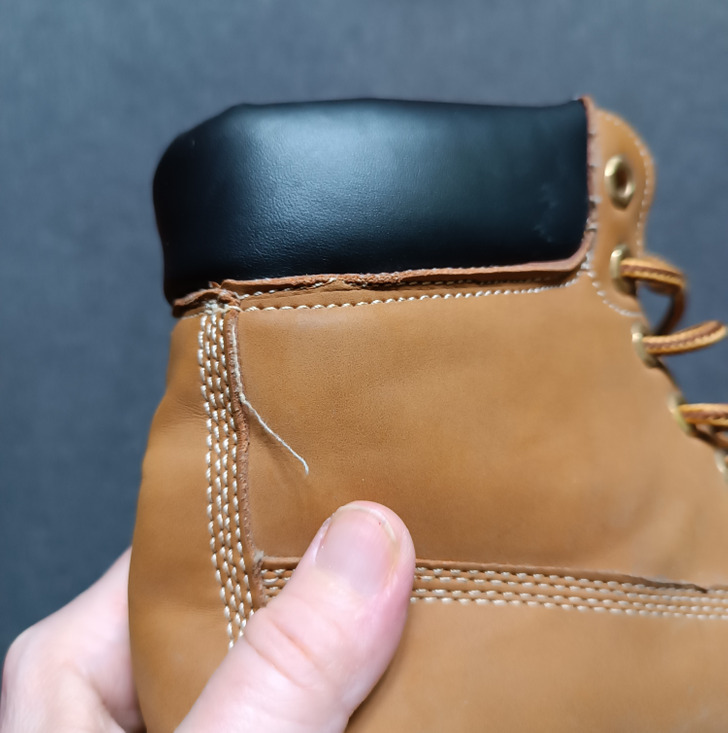
Any uneven or diverging seams make shoes look not that good. This happens if the manufacturer used too thin threads or the work was done poorly. As a result, such a pair will fall apart much faster. It’s also necessary to check the uniformity of stitches and the evenness of the seam itself.
If its line is curved or zigzag-looking, this means that the shoes you’re looking at are of poor quality and will lose their appearance in a couple of months. And zigzag-looking stitch is often used to hide the imperfections of the stitching.
Examine the heels.
The heel must be firmly attached to the sole and not wobble. It’s necessary to look at the shoes from the side. In good quality pumps, the high heels are positioned exactly under the center of the heel and touch the ground at a slight incline.
It’s worth looking carefully at the heels from behind – any deviation of the heels from the angle of 90⁰ indicates a defective product. Moreover, these shoes are simply dangerous to wear – this may lead to ankle injuries.
Loose eyelets are a bad sign.
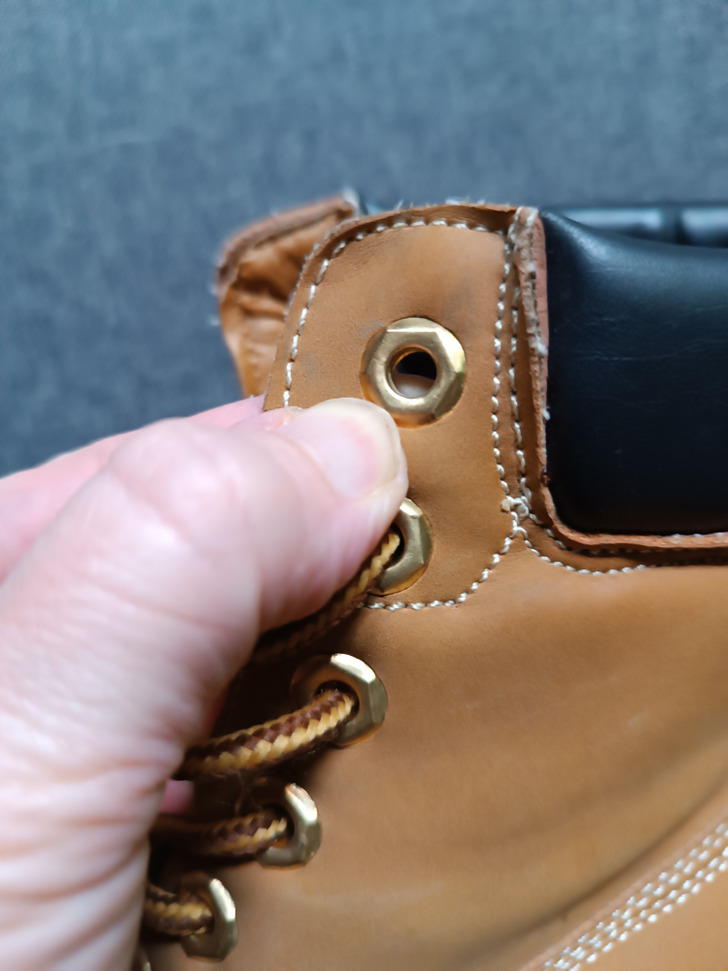
Any metal or plastic parts on the shoe (especially those that come into contact with the skin) should be tightly fastened. Thus, it’s worth carefully examining the eyelets for laces. Although this defect is quite rare, it can lead to wearer’s injury.
You should also check how well any embellishments are attached to the shoe. If they fall off at one point, the pair won’t look good anymore.
Carefully inspect the inside of the shoe.
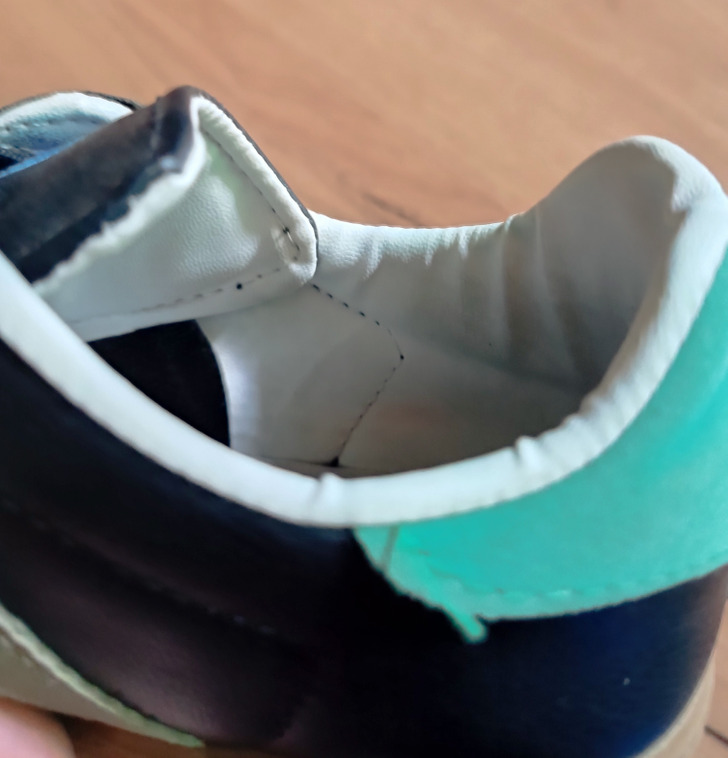
Some manufacturers save on the training of workers and don’t calibrate equipment before the production of a new product line. As a result, shoes, boots and sneakers may have seemingly insignificant defects such as wrinkles and creases. If these defects are small, they won’t cause much trouble to the wearer. But large creases can rub the skin while walking, which will lead to abrasions and blisters on the feet.
Examine the insoles.
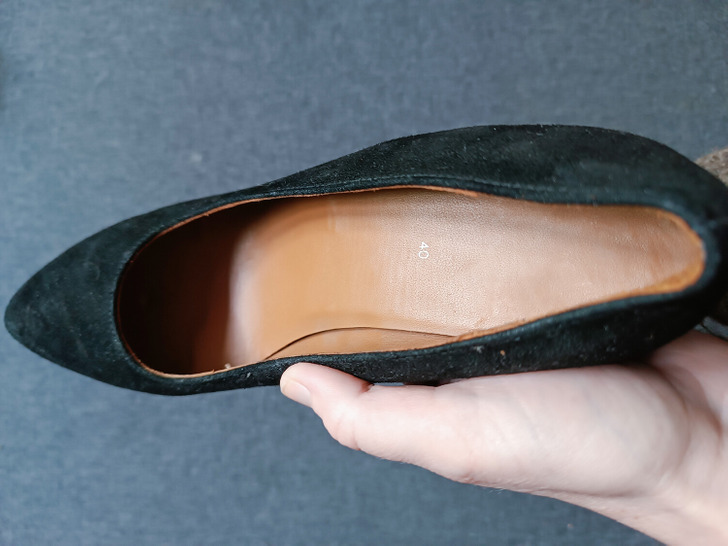
Even if a shoe looks perfect from the outside, you need to scrutinize it from the inside too. If the insoles show small wrinkles and creases, this pair is likely to be uncomfortable to wear. In addition, you should carefully feel the insoles to make sure that there are no bubbles on them.
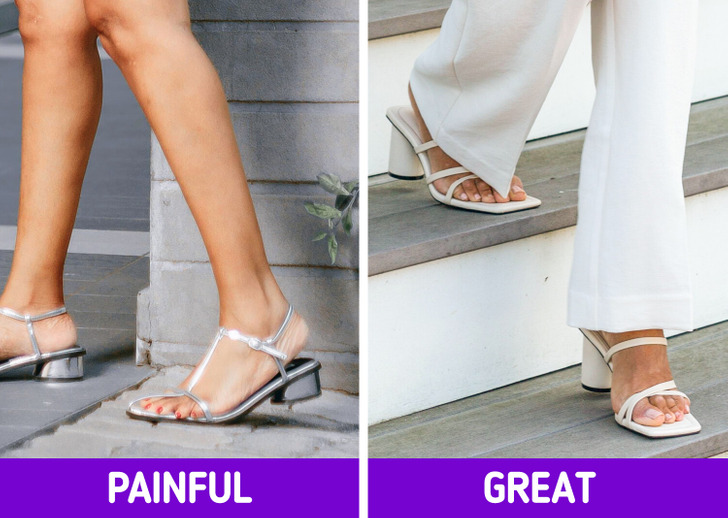
Another important thing is that there must be cushioning between the insole and the sole, especially in the toe and heel area. Otherwise, a long walk in these shoes will make not only your feet and legs sore, but also your back.
Check how the shoes smell.
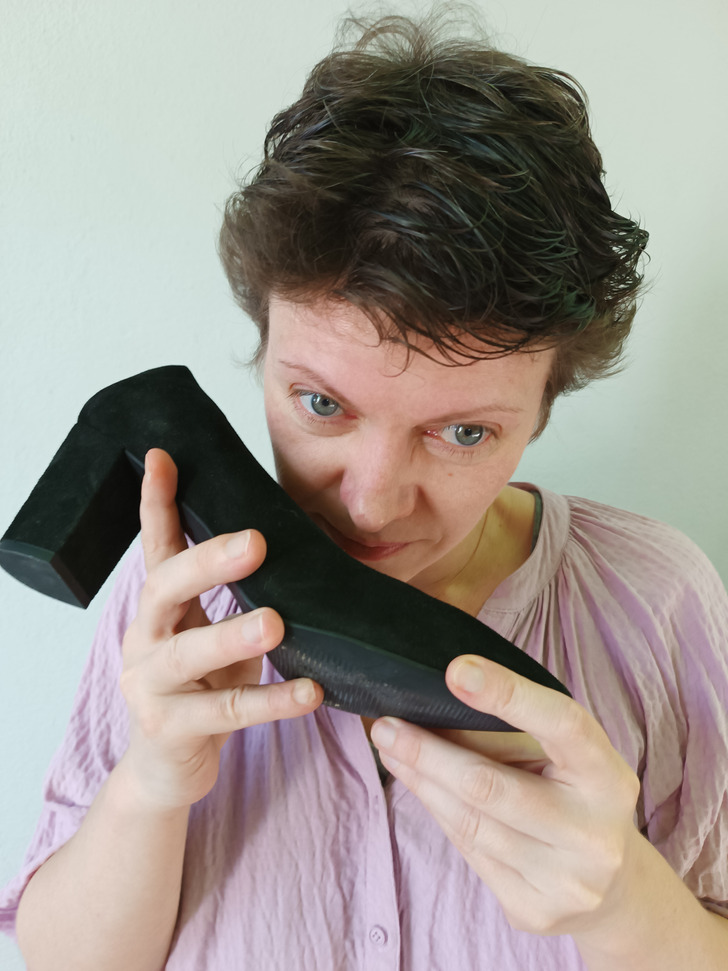
Low-quality and cheap shoes often have a strong chemical odor. It’s best to refrain from buying this pair. But if shoes or boots exude the scent of leather, polish or wood, you’ve found the shoes of high quality.
Take a photo of the shoes.

Of course, shoes made of synthetic materials can also be of high quality, especially when it comes to sports models. But good shoes should ideally be made of leather. They are softer and fit better on the foot, which means they will be much more comfortable to wear.

However, the quality of leather also varies. Often, manufacturers don’t mention the type of leather they use to make shoes in order to keep costs down. To determine the quality of the product you are holding in your hands, you need to take a photo of the shoes and enlarge the image. If you can see pores on the leather, you can safely buy the shoes.
Bend the shoe a little bit.
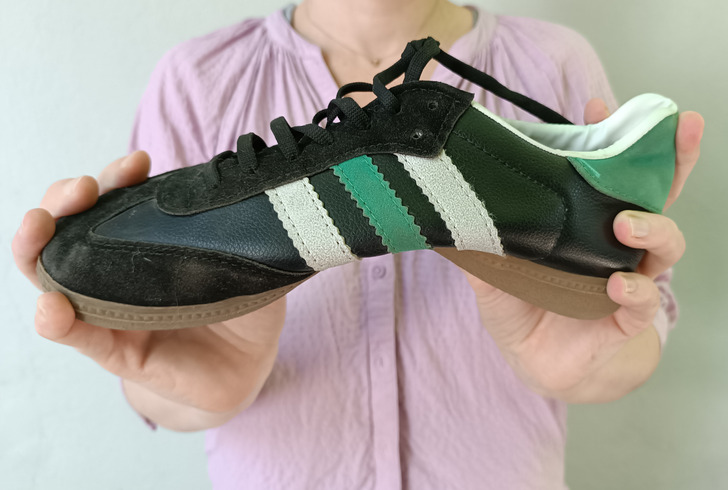
You don’t need to knead your shoes too much, but you can bend the shoe slightly to see how flexible the sole is and whether it remains attached to the upper part when moved. In addition, it’s worth pressing the sides of the shoe a little bit. Throughout the day, our feet usually increase in size a little, so a quality pair should adapt to these changes.
Check how your shoes sound.
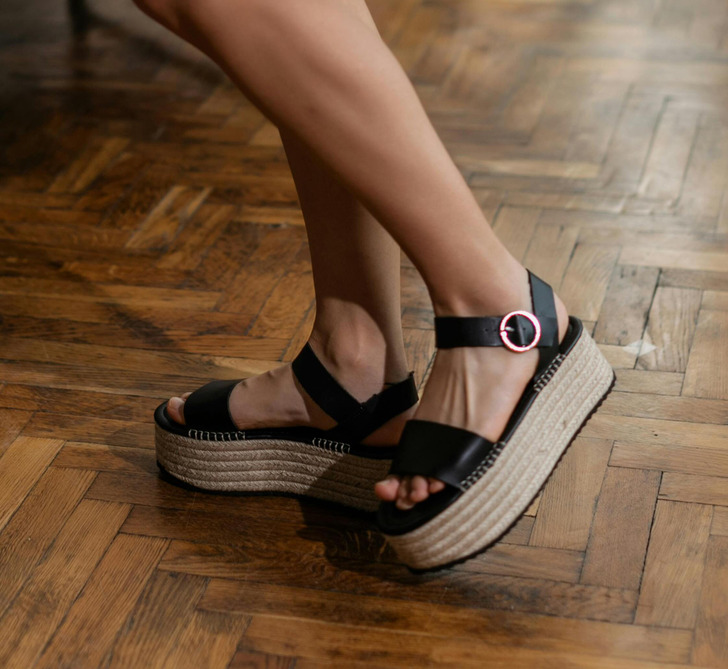
Most shoe shops have soft carpeting on the floor, so it’s a good idea to take a short walk on a harder surface before making a purchase. If the soles and heels make unpleasant clanking noises when you walk, you are likely to be wearing a low-quality pair. And platform or wedge shoes shouldn’t sound like there are voids inside the sole.
Examine the material of the sole and heel carefully.
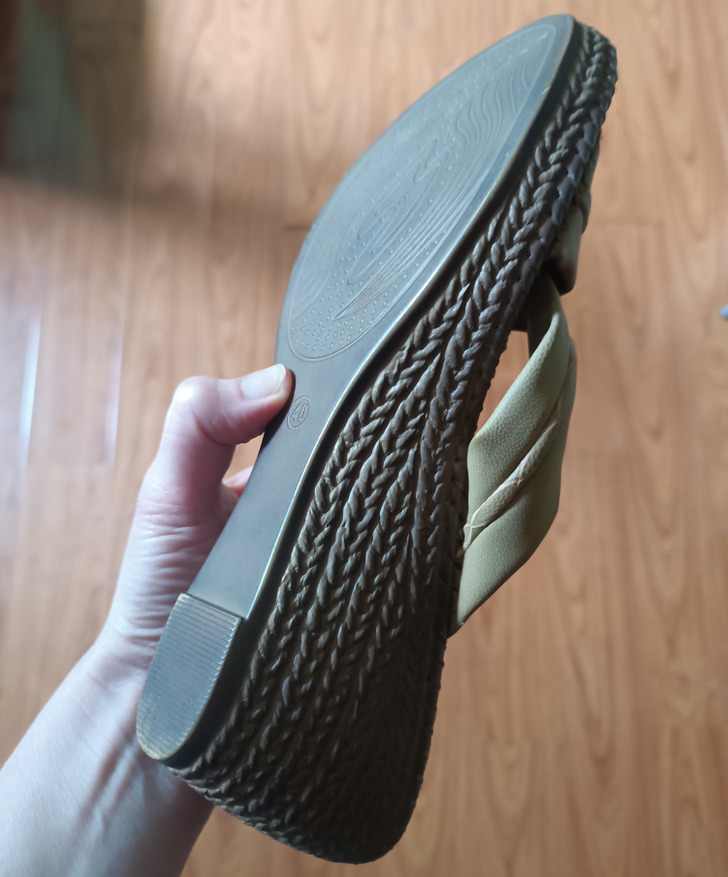
Usually the sole of a really good quality pair is made of leather or good rubber. These shoes are comfortable to wear, and in addition, they almost don’t slip. At the same time, if the base of the sole is uneven, then these shoes will be uncomfortable.
In addition, it’s worth examining the material from which the heels are made. If the manufacturer used plastic or didn’t cover the heel with leather or fabric, then you are looking at a cheap product that is far from being perfect.
Rub the shoes with a cloth.
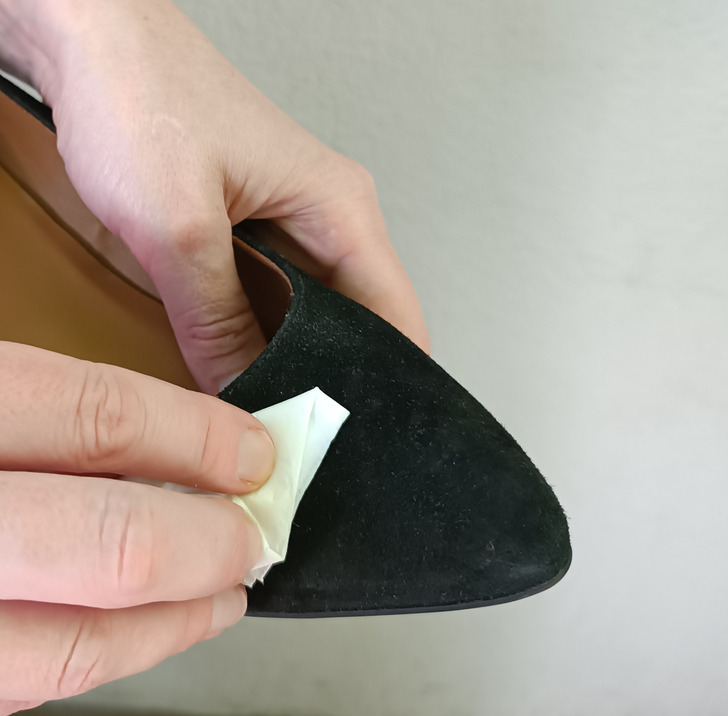
Sometimes manufacturers use poor quality leather dyes, which can leave marks on the skin or clothes. Therefore, before buying, you should carefully rub the shoes inside and outside, first with a dry cloth and then with a damp cloth. If there are no marks on the fabric, the shoes are okay.
And here’s a list of fashionable shoes that are not as cool as they look.
11 Old-School Parenting Rules That We Can’t Imagine to Follow Today
These days, young parents have tons of information about raising kids. There are books, websites, and experts offering advice on every little thing. They can even get consultations from specialists whenever they need. But our own parents didn’t have all that. They raised us based on what they knew and what they learned from their own parents. So sometimes, the way we were brought up can seem really different from what we’re told is best now.
1. Early marriage and parenthood go without saying.
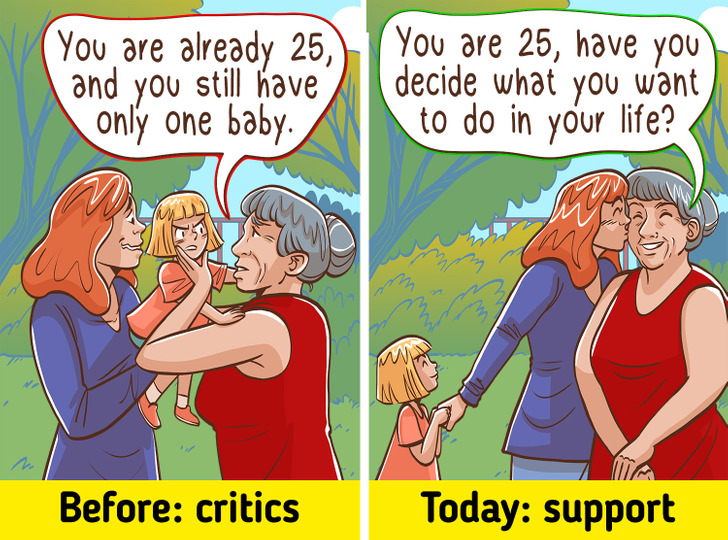
In earlier generations, there was often pressure on young adults to marry and start a family at a relatively young age, and to have more than one child a couple of years after the start of the family. Today, there is more emphasis on personal and career development before settling down. And moreover some researches show that early marriage can lead to some family problems, like dissatisfaction with married life, experience of having lots of responsibility, lack of independence in family life.
2. A college education is an indicator of your status.

«You can’t find a good job without going to college!» Many people must have heard this when they were teenagers. And lots of us believed this, but now don’t even know where our college diploma is. More than 41% of people that finished college have jobs that don’t require this kind of education. Today, employers are more interested in the practical skills of their employees rather than their qualifications.
When you finish school, it may be wise to take a gap year to understand what you really want to do and decide if you actually need a college education.
3. Classes are good for kids’ development — the more, the better!

A very tight schedule can exhaust children, which is obviously not good at all.
Famous American teacher Douglas Haddad recommends that parents slow down and give their children time to discover their own talents, and then decide if they need additional forms of education.
4. Being plump is healthy.
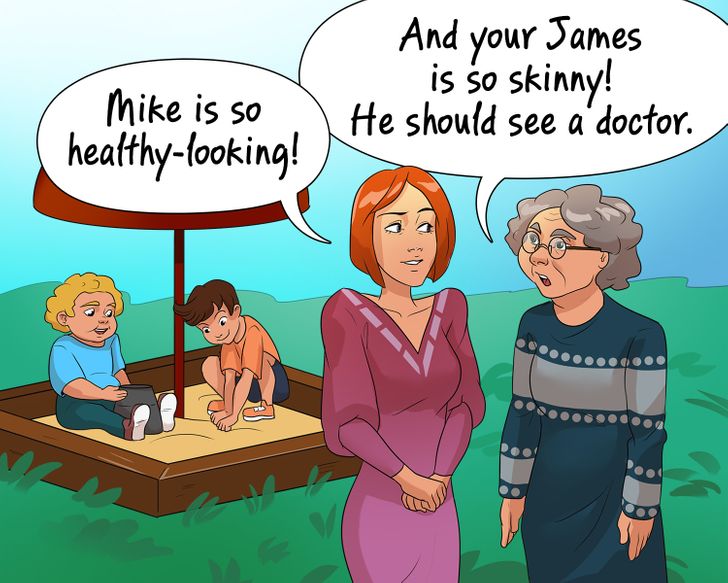
Children that always finished their meals were praised, and being plump was believed to be healthy. But bad eating habits formed in childhood often result in weight problems and eating disorders.
5. Money can’t buy happiness.

We wish this were true, but life says otherwise: money can make you happier, no matter what other people say.
Parents should teach their children the basics of budgeting. This will help kids form the right habits in money management and reach financial success in their adult lives.
6. Not standing out from the crowd means being good.
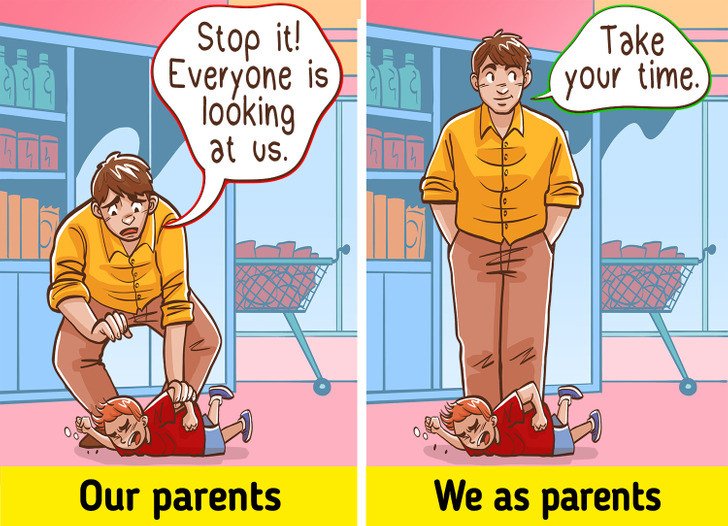
Traditional parenting often enforced strict dress codes and grooming expectations, particularly regarding modesty and conformity to societal norms. This might puzzle us today as modern parenting encourages children to express themselves through their clothing, appearance and let them express their emotions fully.
7. Older children are responsible for younger ones.
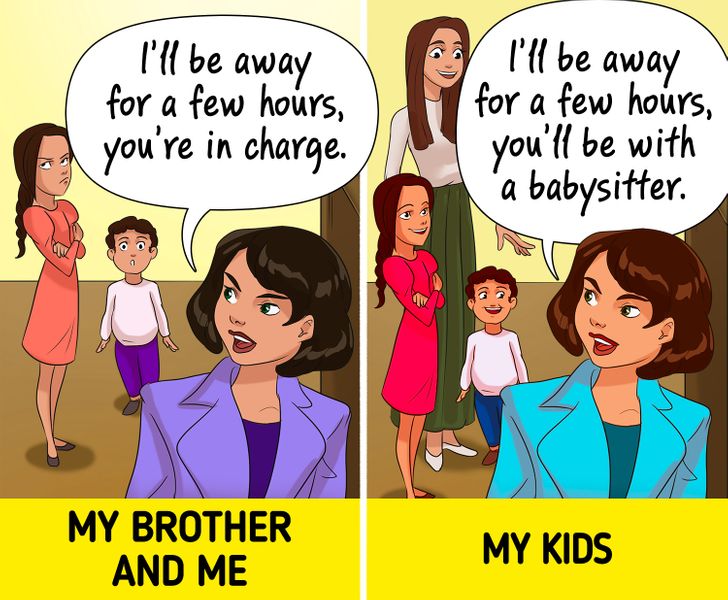
Very often, older children had to spend a lot of time taking care of younger ones. Parents had to work a lot and there was no other choice. But older kids had to sacrifice their time with friends and hobbies for the needs of their younger siblings.
Psychologists say that sometimes when kids have to perform the duties of parents, it may lead to psychological problems: they might not want to have their own children.
8. Women are housewives and men are breadwinners.

In recent decades, gender roles are not as important anymore. Women today can build successful careers and men can go on paternity leave and manage things around the house.
9. There’s nothing more shameful for a woman than having children without a husband.
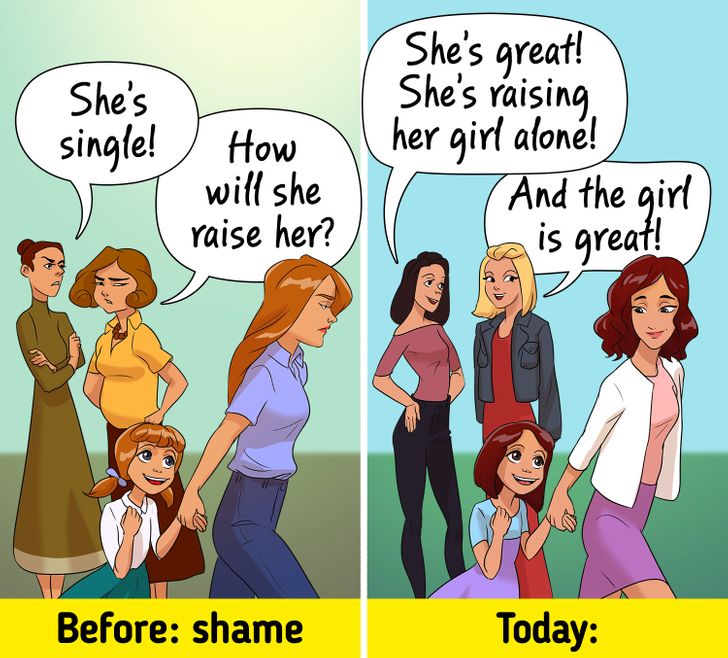
Wrong, again. Today, there’s nothing surprising about single mothers and they’re not frowned upon as they were 30 years ago. Very often, having a child without a husband is an informed decision made by a woman. More than that, in the past 30 years, the number of single fathers has increased 1.5 times.
10. Storks deliver babies.

Some topics were never discussed — like when kids asked where babies came from, parents often said that they were delivered by a stork. Because of this, young people would often get into their first relationship without any knowledge of their bodies. They only based things off of the advice they received from their friends and bits of information from books and films. All these experiences could lead to bad consequences, including problems with both physical and mental health.
11. Children should be seen and not heard.

In the past, children were often expected to remain quiet and obedient in the presence of adults. Modern parenting emphasizes the importance of children expressing themselves and their opinions, because self-expression is a vital component of a young individual’s growth. The development of self-esteem and confidence in children is frequently nurtured by their capacity to express their feelings with clarity and authenticity.
Every parent has their own way of raising children. Just like how every family has its own special traditions, parents have rules they think are best for their kids. Sometimes, famous people, like celebrities, also share their ideas about parenting. They might talk about what works for them and their families. But in the end, each parent decides what’s right for their own children, based on love and what they believe is best.



Leave a Reply